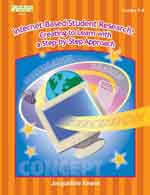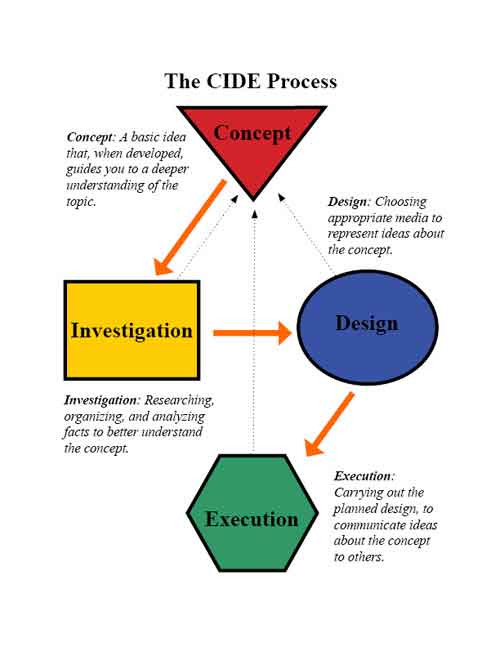|
|
| Vol 15|No 4|April|2006 | |
| Please feel free to e-mail this article to a friend, a principal, a parent, a colleague, a teacher librarian, a college professor, a poet, a magician, a vendor, an artist, a juggler, a student, a news reporter or anyone you think might enjoy it. |
Creating to Learn:
by Jacqueline Keane
|
|
“Anyone? … Anyone?” I'm sure all of us have experienced something like that scene with Ferris Bueller's teacher-staring out at a collage of blank faces, hoping for a student to show some interest, some spark of understanding, or (should we dare even think it?) some insight. As Ferris's teacher used old-fashioned “talk and chalk” at the front of his classroom, his students drifted farther and farther away. No wonder Ferris wanted to take a day off. Is technology the end or the means? We should be exploring questions like these:
By addressing these essential questions, we can avoid the fate of Ferris' teacher-always waiting for our students to show some sign of life as we drone forward in our curriculum. Creating to Learn is designed to help our students gain a deeper understanding of the curriculum by having them actively participate with the subject matter. (No more students nodding off in the back of the room.) It inspires them to really think about the subject matter, enabling them to respond to both standardized and open-ended critical-thinking questions with genuine knowledge and insight. With this method, the technology component isn't a side project; it is an integral tool that adds horsepower to the process, it simply enables students to be more efficient and produce higher quality work. It emphasizes the curricular concepts rather than the technology tools-recognizing that technology is a means, not an end-learning becomes more meaningful and lasting.
The act of creating is what reinforces the curricular concepts for our students. The process can be explained in terms of CIDE, an acronym for the four phases: Concept, Investigation, Design, and Execution.
(Keane, 2006) In this framework, students are not asked to cut and paste, regurgitate facts, or “learn by osmosis.” To create a knowledge product, they must think, cultivate their understanding, constantly reevaluate the material, and build a foundation of knowledge substantial enough for them to impart that knowledge to others. Simply put, to effectively communicate a topic to someone else requires an authentic understanding of the topic. Combine this learning with sound technological practices, plenty of room for individual creativity and you've got it … a recipe for enduring learning. Guessing between A, B, C, and D just doesn't cut it anymore. The Creating to Learn method and the CIDE process are presented in the book Internet-Based Student Research: Creating to Learn with a Step-By-Step Approach (Linworth, 2006). With its user-friendly illustrated text, we can learn how to bring our best teaching practices to life with the effective use of instructional technology. © 2006 Jacqueline Keane, all rights reserved. |

 From Now On
From Now On